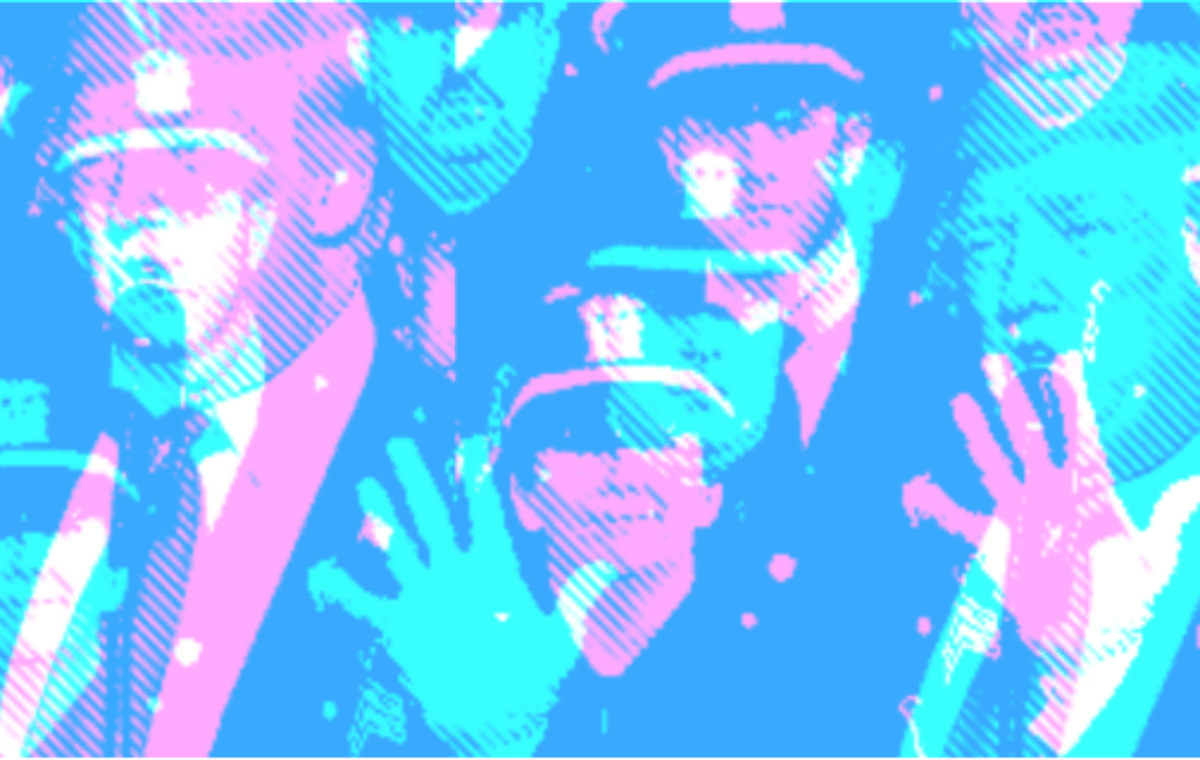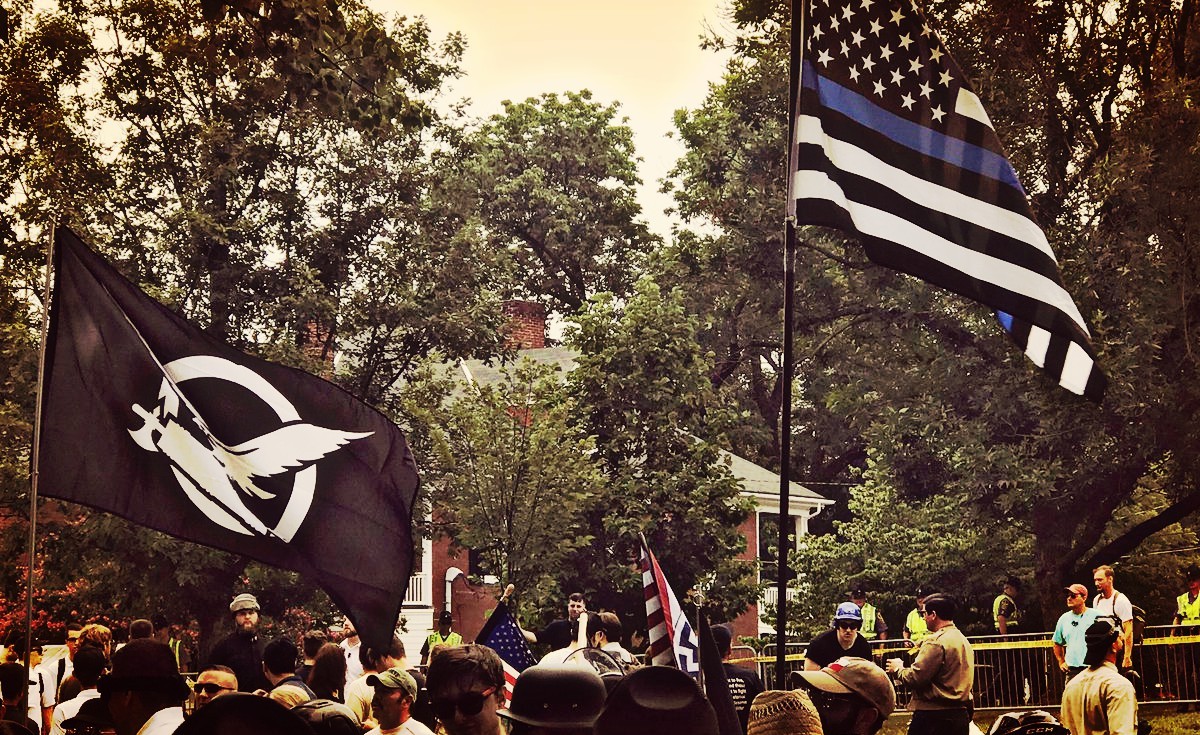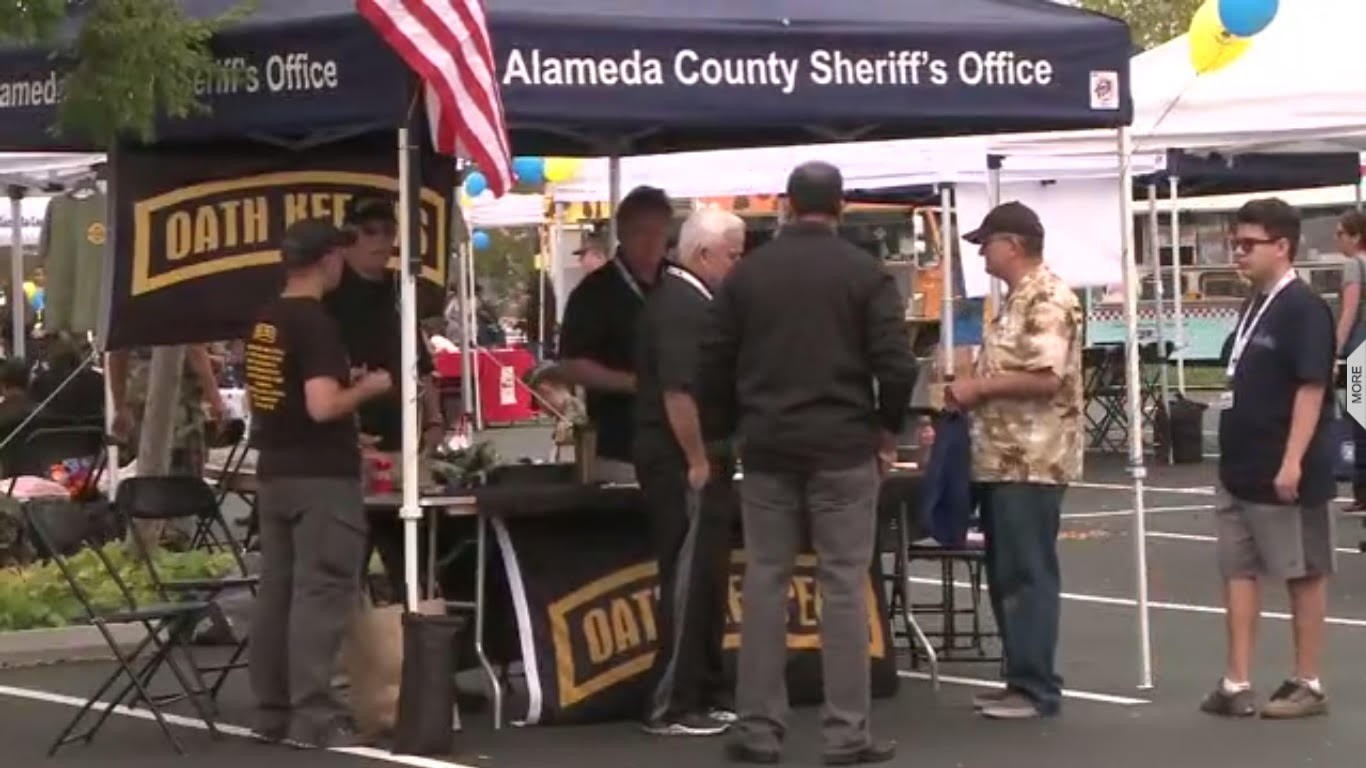Filed under: Analysis, Featured, Police, Repression, The State, US, White Supremacy

Currently, 2017 is on track to becoming just as deadly a year in terms of the police killing of American citizens as 2016, and the numbers aren’t pretty. According to the police monitoring website, Killed by Police, as of December 19th, 2017, 1,142 people have been killed by American law enforcement since January 1st, 2017. This is compared to 2016, where KBP reports that 1,165 people were killed, and previous years which also saw over 1,000 people gunned down. While both The Guardian and The Washington Post dispute these exact numbers, they do so only within a narrow margin. The Washington Post states that 937 people were killed by police in 2017 and 963 in 2016, while The Guardian through it’s “The Counted” initiative, registered 1,093 people killed in 2016, but did not collect data for 2017. Meanwhile, Mapping Police Violence put the number of people killed in 2017 at 1,049.
We calculated overall police shootings rates from 2010-16 using data from the new @vicenews database. St. Louis is off the charts. https://t.co/OxbkOhRAKS pic.twitter.com/qAAVu9tPxN
— Samuel Sinyangwe (@samswey) December 11, 2017
Despite the slight difference in reporting over numbers, one clear fact remains, American law enforcement officers are killing around 1,000 people per year, and there seems to be no sign that things are going to be stopping anytime soon. According to Mapping Police Violence, only 10 days past in 2017 where American law enforcement did not kill anyone, and to put this in perspective, according to an assessment in 2015, 1 out of every 13 people killed by guns is in fact someone killed by police.
Moreover, new research from VICE suggests that police shootings in general are much more widespread than previously thought, in regards to both the amount of people who are shot at by police but sustain no physical injuries, as well as those that are shot by police but survive their encounters with law enforcement.
Lastly, there is no reason to believe that these levels of police shootings and killings will end anytime soon – much less go down. If anything, the push from Sessions, police unions, and Trump himself, for a complete dismantling of federal oversight that has been put into place over the last three years and spurred by numerous uprisings and sustained organizing from Black Lives Matter, signals the possibility that these numbers could actually grow. As Sessions pushes for a renewed War on Drugs and attacks on social movements, the need to push back against and build autonomy from, police terror and authority, is greater than ever.
A Mass Epidemic of Police Shootings
While police have killed on average over 1,000 people every year in recent memory, at the same time, there is new evidence that shows the scope and overall impact of police shootings is in fact much higher the previously thought, according to new report released from VICE, which collected information from 50 large scale police departments across a six year period, from 2010 to 2016.
For instance, the new report shows that one in four people shot, or shot at, by police were unarmed, “That’s quadruple the unarmed rate the Washington Post found for the country as a whole in fatal incidents,” the report states. African-Americans were also shot, or shot at, at a higher degree than any other race, and people of color, especially blacks and Latinos, were more likely to be shot while unarmed by police. As VICE wrote:
55 percent of the total and more than double the share of the black population in these communities. That’s a 28 percent higher rate than what the Washington Post found for fatal shootings in the same communities.
Twenty percent of the African Americans tallied were shot following “relatively innocuous pedestrian or traffic stops,” which was true for just 16 percent of whites shot by police. Those figures are of particular importance considering that studies find black drivers are more likely to be stopped by cops based on less evidence, less likely than their white peers to be spoken to respectfully during those stops, and more likely to be ticketed and arrested than white drivers.
In short, police shootings are more than double what was previously understood to be the baseline, especially when we factor in instances where people survive or are not physically hit, as two-thirds of those that were shot at by police, survived. Meaning, the overall impact of police violence is much broader than simply the total number of deaths. For the thousands that are injured or narrowly avoid bodily harm, they still bare the scars of these encounters and carry with them the memories of these interactions, along with the understanding that the police who almost killed them are still on the job.
Lastly, if it weren’t clear already, many of these encounters come out of everyday foot and traffic stops carried out by police. In some cities, this plays out through “broken windows” theory applications like ‘Stop and Frisk,’ in other instances, a drive for big bucks by local governments through the giving out of tickets and court fees, that engenders a policy of near constant police repression.
According to a VICE expose in 2016:
A new report from Seton Hall Law School Center for Policy & Research has found that in the majority-white municipality of Bloomfield, New Jersey, nearly 80 percent of traffic tickets are issued to African American and Latino drivers. The report also found that most tickets were issued to non-resident minority drivers passing through town, suggesting a “de facto border patrol” policing policy is in effect.
This means that in a majority white town, police officers were concentrating their forces in black and Latino neighborhoods, pulling over drivers at a rate unequal to that of their white counterparts. It also meant that those that got tickets to appear in court, even if they did nothing wrong, were stuck paying mandatory court fees, resulting in a de-facto poll tax for poor and working-class black and Latino residents.
This also helped create a circular argument on the part of the police: “We go where the crime is,” however in the placing of police in certain neighborhoods that by design leads to constant stops and harassment, thus the level of “crime,” i.e. simple infractions and traffic violations, was ensured. This is of course a reality that is playing out across the country, and feeding into the amount of police encounters which thus, potentially end in shootings and killings.
While much of the drive for this is the putting down of potential revolt and the overall containment of black and brown neighborhoods, this reality also in turn creates massive amounts of money for police departments and local governments, both from cash confiscated by police during stops that do not even result in arrest, and in tickets and court fees that are generated through police encounters. In short, the role of the police has not changed since their inception as a proto-force in the American south as slave catchers, and has only expanded in terms of capacity, militarization, and in the level of organization.
Trump, Sessions, and a New Wave of Repression
Beyond the scope of police shootings, the VICE research project also makes another point, that in the wake of the Ferguson and Baltimore Insurrections in 2014 and 2015, as well as the rising power of the Black Lives Matter movement, the Department of Justice (DOJ), pushed a variety of cities to comply with a set of suggested reforms and oversights. According to the research conducted by VICE, this led to a decrease in overall police shootings.
But while the total body count of people killed by police did not seem to be affected, according to VICE, in their analysis of the data from 50 large cities over a period of 2010-2016:
Cities that voluntarily adopted DOJ-recommended reforms saw a 32 percent decline in officer-involved shootings in the first year. The police departments that were forced to take on reforms through binding agreements with the DOJ saw a 25 percent decline that year, including Baltimore, whose agreement began this year. In Chicago, shootings by cops dropped by more than 50 percent after McDonald’s death, an incident that prompted a DOJ investigation and a package of recommended reforms.
Truthdig followed up on this point and wrote:
One of the few positive trends in the numbers Vice examined is a 20 percent downturn in police shootings since 2014, the result of Obama-era reforms in response to Department of Justice recommendations. Of the 10 cities that saw the largest drops in police shootings, seven complied with changes proposed by the federal government.
But in the face of these limited reforms that were enacted due to mass black insurgency and revolt, the Trump campaign began an appeal towards prison guards, police labor-unions, and border patrol agents. This appeal was based on the demonization of black struggle and social movements, the promise of unfettered police action, as well as the rolling back of DOJ oversight. In this context, the State seized on far-Right conspiracy theories that Black Lives Matter was mobilizing to kill police officers, despite the fact that both Sovereign Citizens and far-Right neo-Nazis have in the past 15 years actively killed 34 members of law enforcement. Despite this reality, this ‘Blue Lives Matter’ rhetoric is why Trump gathered so much support from formal police organizations, and in turn publicly suggested over and over again that police should be given free reign to rough up and manhandle those that were arrested. The White House website summed it up this way after Trump took office:
The Trump Administration will be a law and order administration. President Trump will honor our men and women in uniform and will support their mission of protecting the public. The dangerous anti-police atmosphere in America is wrong. The Trump Administration will end it.
Our job is not to make life more comfortable for the rioter, the looter, or the violent disrupter. Our job is to make life more comfortable for parents who want their kids to be able to walk the streets safely. Or the senior citizen waiting for a bus. Or the young child walking home from school.
Of course this kind of thinking is based around the idea that police themselves are under seige and are beset by a wide array of violent actors that want to kill them simply for being police, and that moreover, those that riot do so because they want chaos. In reality, we know that increasing police violence and killings has led to a continued loss of legitimacy within the population towards law enforcement, as systematic police violence and repression has fueled ongoing anti-police protests and riots which have at times evolved into full on insurrections against the State itself, such as in Ferguson and Baltimore. In the view of the Trump administration as opposed to that of Obama, the answer to these uprisings is not to placate them with dialog and small reforms, but instead to crush them with the utmost brutality. In short: more of the same.
A ‘Blue Lives Matter’ flag flies at the neo-Nazi Unite the Right rally in Charlottesville, VA on August 12th.
But Trump himself wasn’t the one to put into practice a strategy of broad sweeping repression; he needed someone that could act as a battering ram against communities of color, the poor, and social movements: Jeff Sessions. Upon coming into office, Attorney General Jeff Sessions announced the pulling back of federal interventions into local police departments, saying that federal authorities should not be engaging in “federal intrusion” of local police affairs, creating essentially a complete turnaround from the limited reforms of the Obama administration. Issuing a two page memo earlier this year, Sessions stated, “It is not the responsibility of the federal government to manage non-federal law enforcement agencies.” In the same memo, Sessions pushed for the “most serious charges” and “stricter sentences” of those arrested.
As The Guardian wrote:
Trump’s new attorney general, Jeff Sessions, has also been asked to devise “new crimes of violence” that would make assaults against police punishable with severe sentences…Trump said in an order signed on Thursday that his administration plans to “define new federal crimes, and increase penalties for existing federal crimes, in order to prevent violence” against officers, and would pursue “new mandatory minimum sentences” for those who break the new laws.
The president’s plan, which echoes so-called “blue lives matter” bills from conservative state legislators, represents a sharp about-turn from the moderately progressive proposals issued by the Obama administration amid unrest over the fatal shooting of African American men by police officers in the past two years.
Sessions would go on to call for the reopening of the war on drugs, and even signaled that he would go after medical marijuana dispensaries and weed in general. This move by Sessions means the doubling-down of a campaign of counter-insurgency that started after the coming to light of COINTELPRO, all of which has led to the disastrous system of mass incarceration and militarized policing that we see today.
The far-Right paramilitary militia group The Oath Keepers runs a booth at the ‘Urban Shield’ expo in the bay area, attended by various law enforcement agencies.
But in pushing for this new wave of repression, Sessions has gained the support of the police top brass and labor associations, including the “Fraternal Order of Police (the nation’s most prominent police union), the Federal Law Enforcement Officers Association, and the National Association of Assistant US Attorneys.” This factor is crucial, both as the State and Trump lose more legitimacy and society in general becomes more unstable and unequal. In short, the State is recementing the loyalty of the police – they’re going to need them.
Meanwhile, various forces within the State have also rallied for the criminalization of all of the major autonomous movements within the US, as Congressmen call for the labeling of pipeline protesters as terrorists, the FBI investigates “anarchists extremists of an ‘antifa type ideology,‘” and papers are written about the threat of “Black Identity Extremists.”
In short, in only a year, the Trump administration has managed to roll back many of the small cosmetic and piecemeal reforms that have been put into place by the Obama administration over the past three years, and in turn laid the foundation for the infrastructure of a new wave of repression that places in its sights both social movements and poor and working-class communities.
Building Communities of Resistance
If the rolling back of oversight from the DOJ by Sessions shows anything to be true, it’s that placing our faith in the State to police itself is a losing strategy. Just as the workers’ movement saw diminishing returns the more that it based its activity alongside the Democratic Party as opposed to organizing to fight capital head on, we too see a failed strategy in attempting to appeal to the various Civil Rights oversight apparatuses within the American security State for relief from endemic police violence. In short, the more that we attempt to play a game designed and controlled by the elites, on their terms, the more we will continue to lose.
If instead we can come to understand not only the history and nature of police in the United States as a force that is intended to keep in place racial and class divisions within society, and moreover the modern police to be a force of counter-insurgency against the broader population, then we can begin to organize ourselves in a way that seeks to build our own power outside of the State.
If the over month long uprising in St. Louis shows anything, it’s that despite everything that Trump has thrown at us, people are still more than willing to throw down as the stakes become higher and conditions remain untenable.







